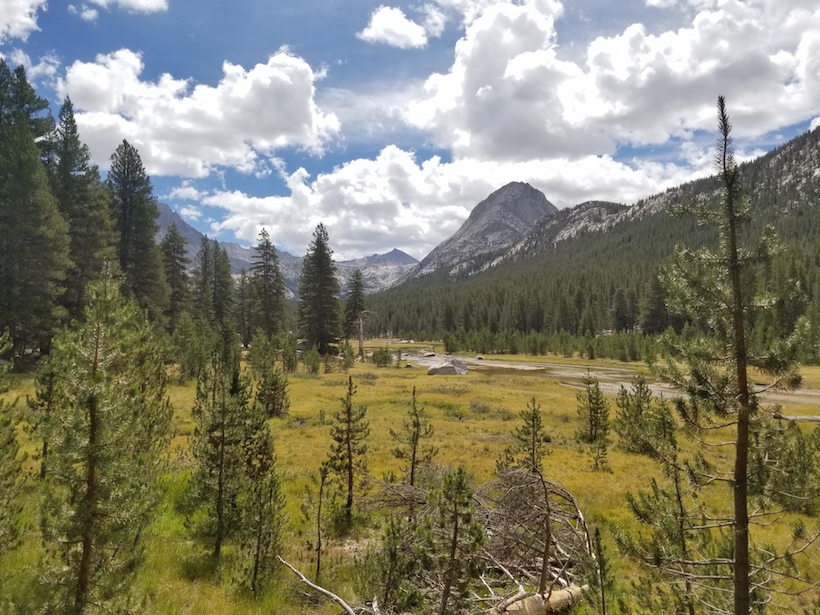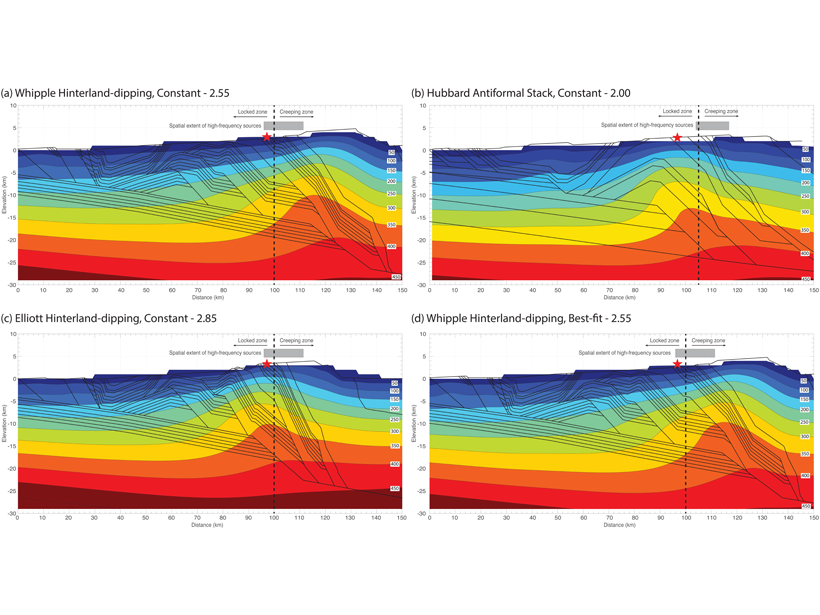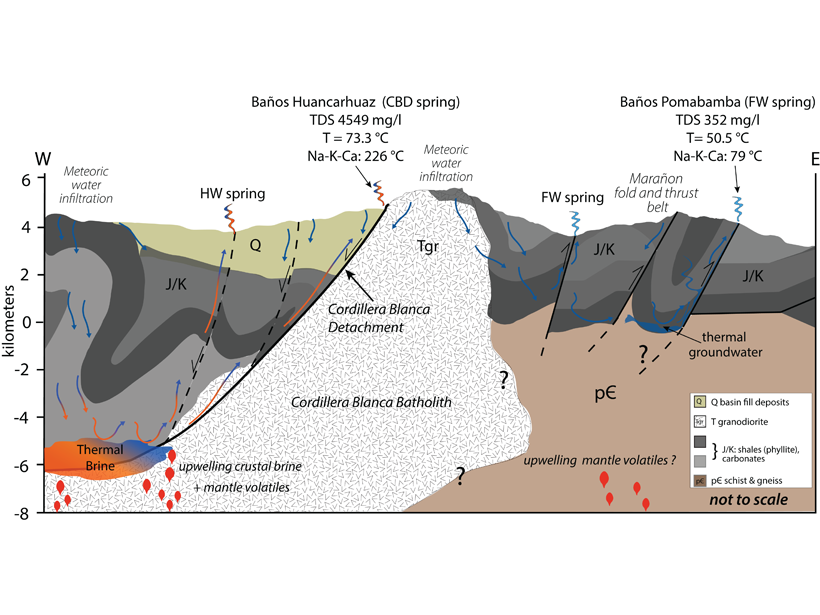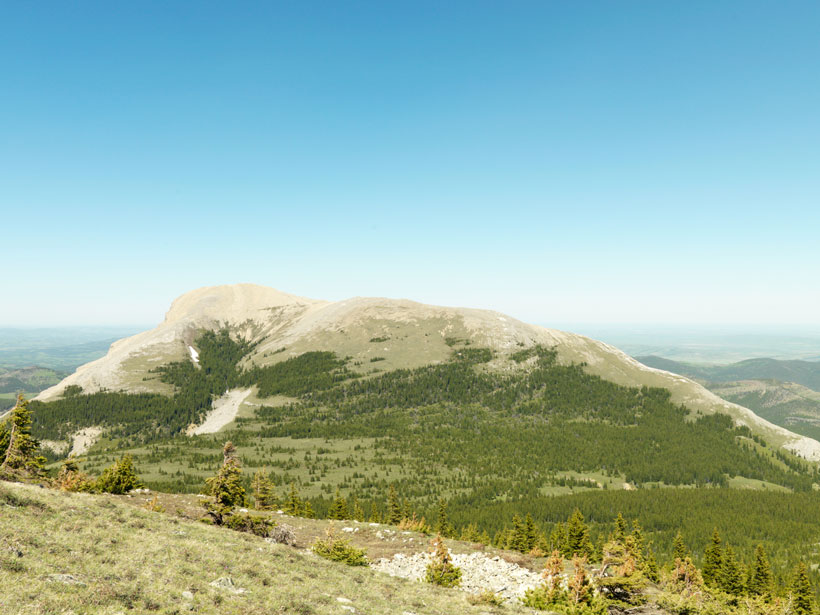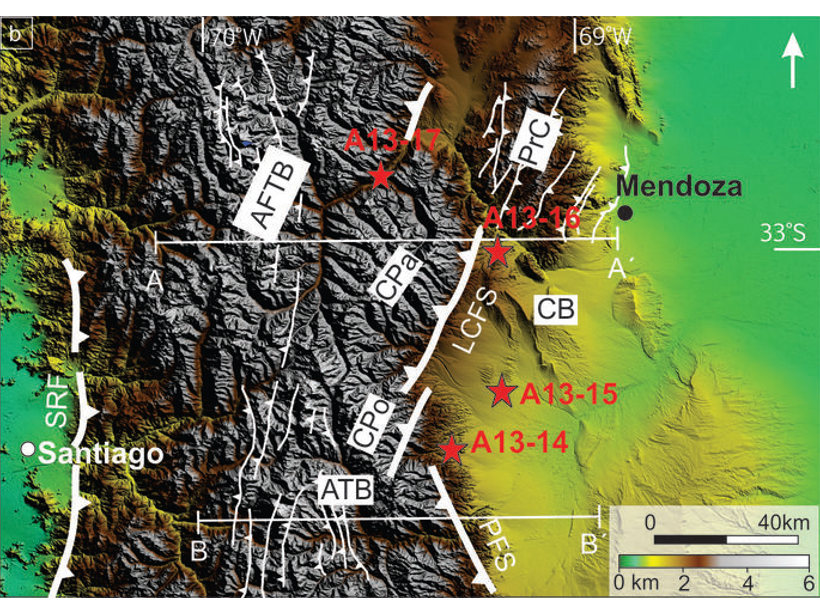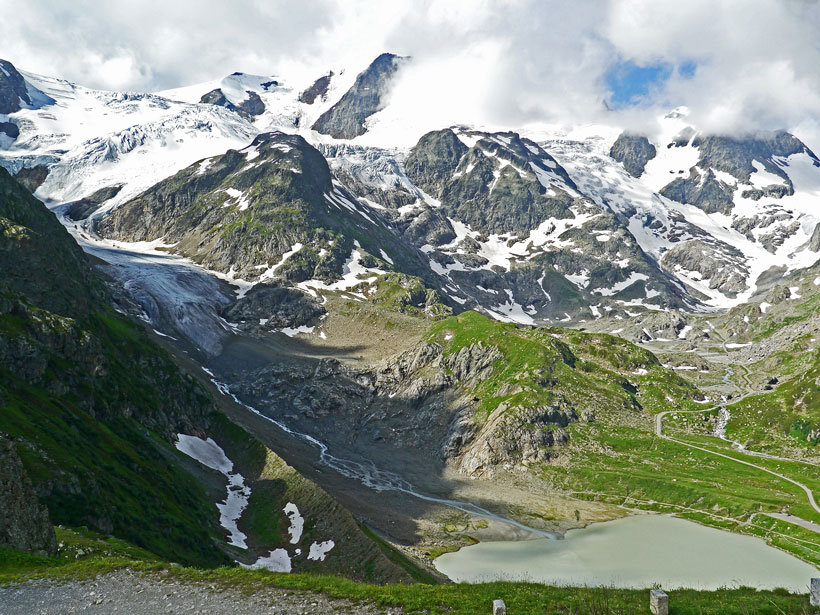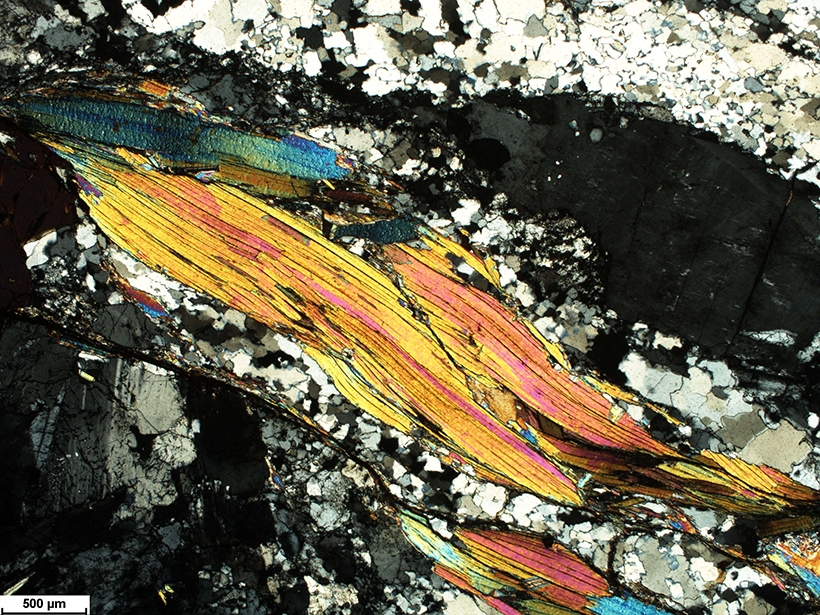Living in Geologic Time: Backpacking through the past, present, and future of fire on the John Muir Trail.
mountains
Deconvolving What Lies Beneath the Himalaya
A new study that combines constraints from the 2015 Gorkha earthquake, forward models of deforming crust, and thermochronology data gives new insights into the structure of the Himalaya.
Structural Style Controls Crustal Fluid Circulation in Andes
Variations in hot spring geochemistry from adjacent mountain ranges with different styles of faulting highlight the influence of crustal-scale structures on circulating fluids in the Peruvian Andes.
Canada’s Rocky Mountain Forests Are on the Move
Using century-old surveying photos, scientists have mapped 100 years of change in the Canadian Rockies to document the climate-altered landscape.
What Controlled the Growth of the Southern Central Andes?
Flat-slab subduction appears to have played a minor role in the growth of the Southern Central Andes, with evidence for eastward migrating deformation.
Cold Cuts: Glaciers Sculpt Steep Peaks
In environments raked by glaciers, tall peaks like Denali still survive, held up by surprisingly thin crust.
Mountain Streams Exhale More Than Their Share of CO2
Streams that flow down mountainsides are more turbulent than those that run along forest floors, which leads to faster gas exchange between water and air.
Climbing the Occasionally Cataclysmic Cascades
Living in Geologic Time: Every one of the Pacific Northwest’s volatile volcanoes is likely to erupt again before the range goes extinct.
Ancient Precipitation Reveals Clues About Mountains and Climate
By studying the chemical signatures of 300-million-year-old precipitation, researchers find evidence that the supercontinent Pangea contained peaks as tall as the European Alps.
How Volcanic Mountains Cool the Climate
Though coastal plutons spew greenhouse gases into the atmosphere as they form, they also pull some of those gases back out of the atmosphere as they break down over time.

